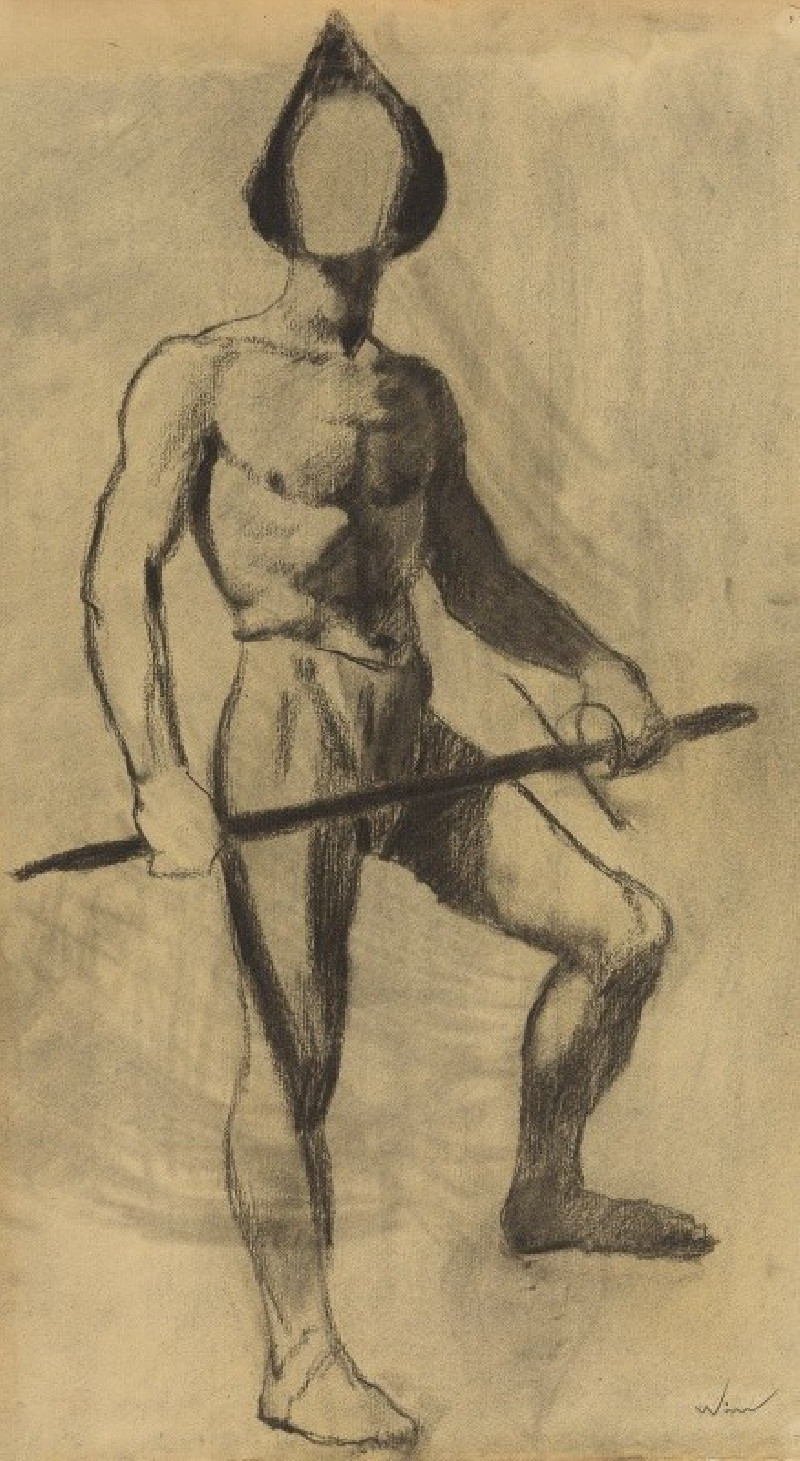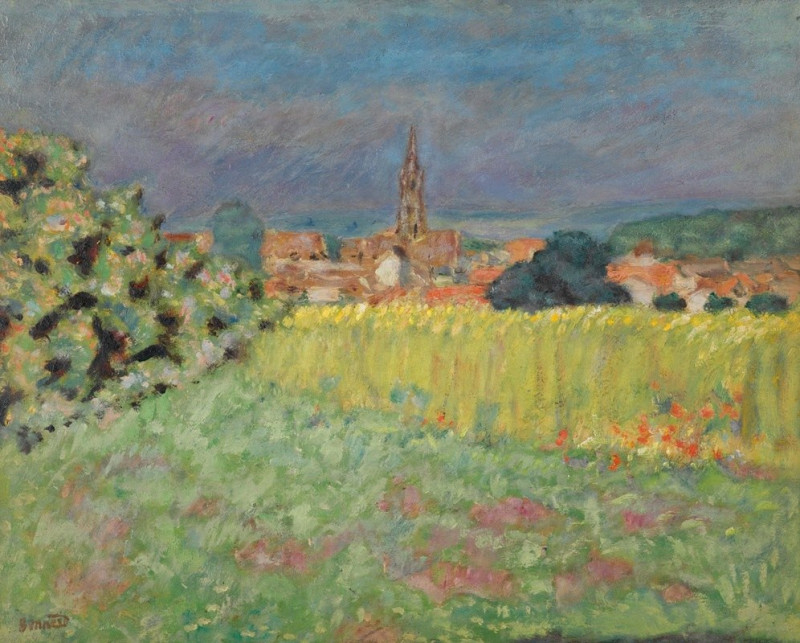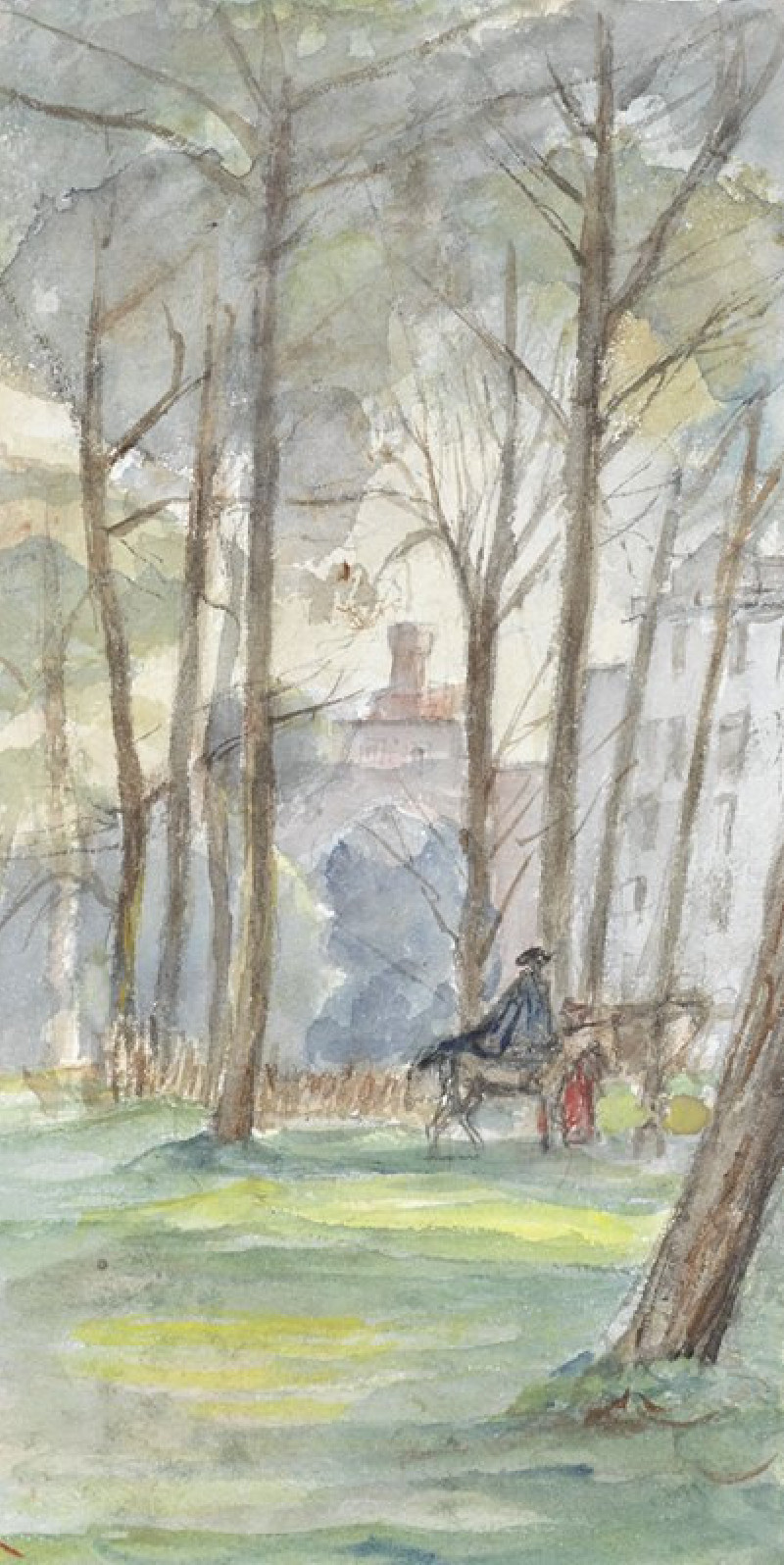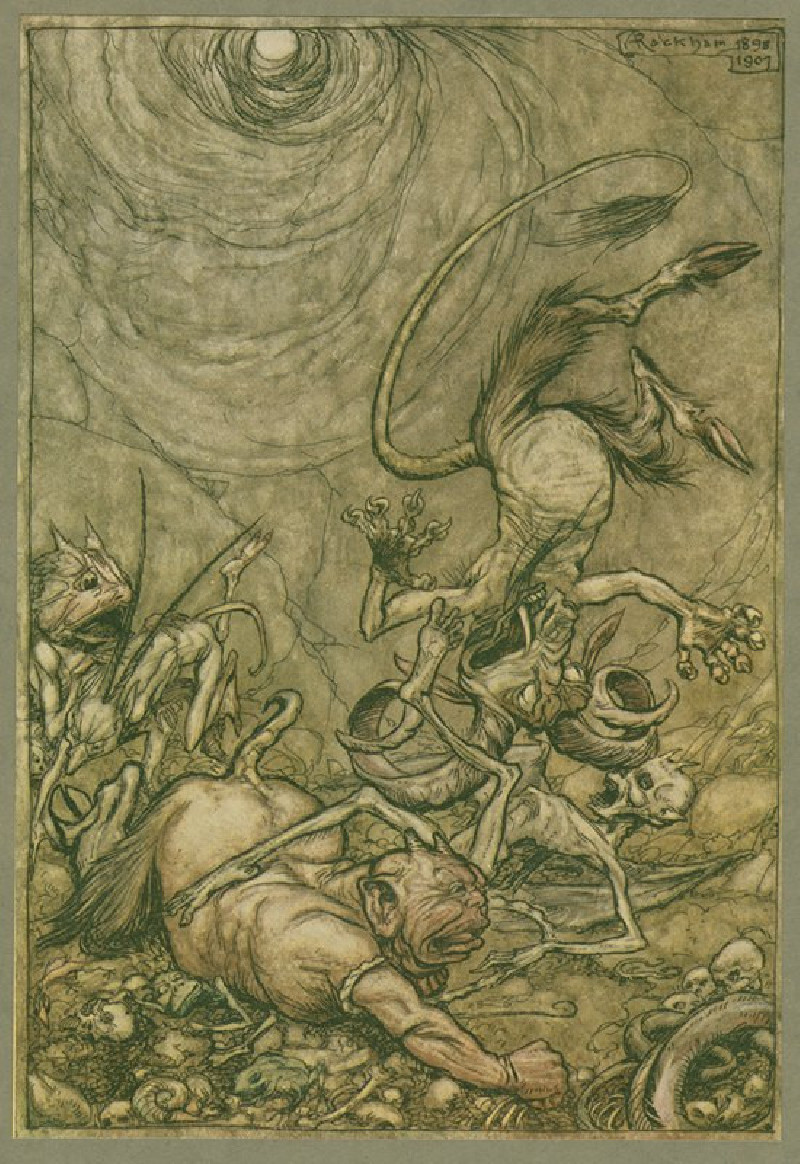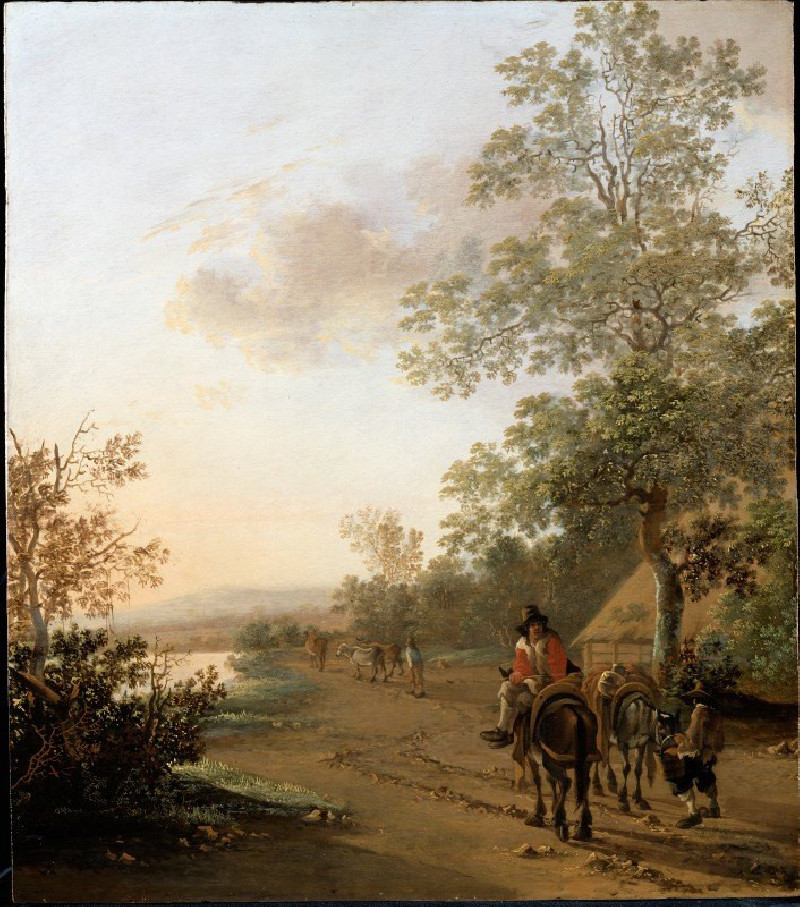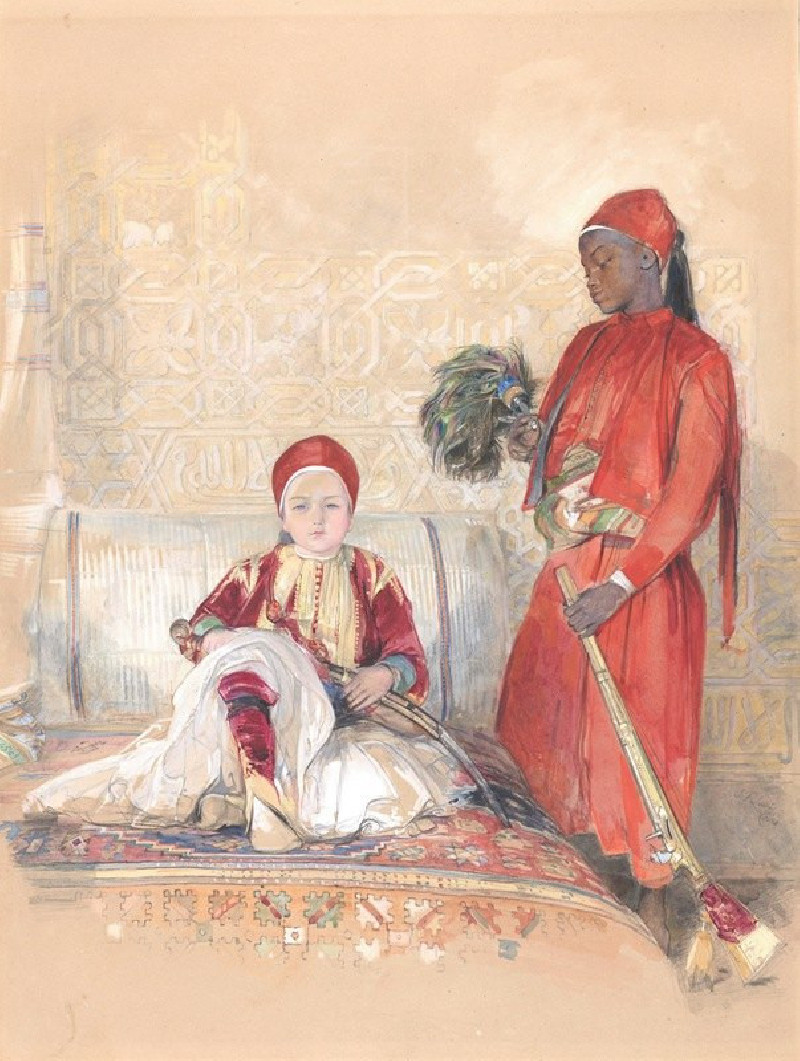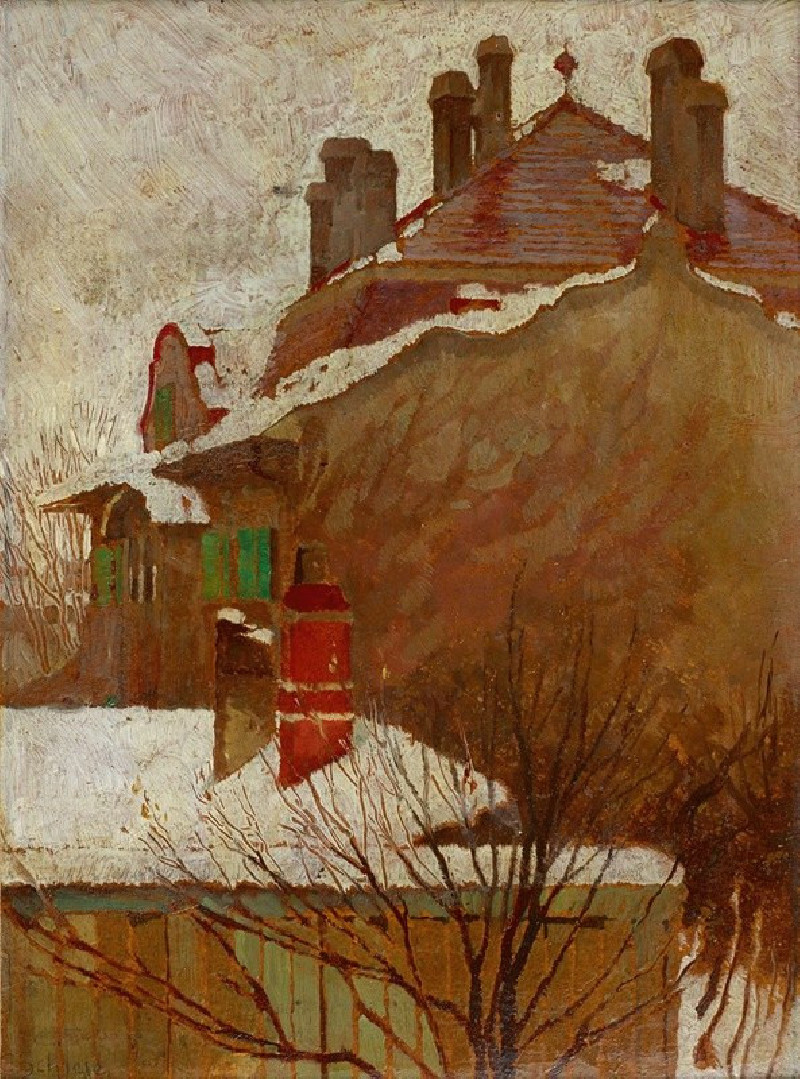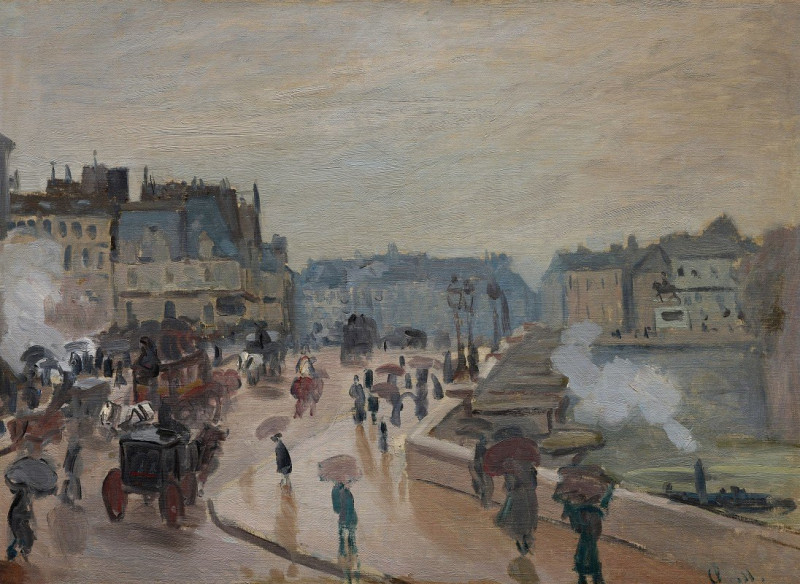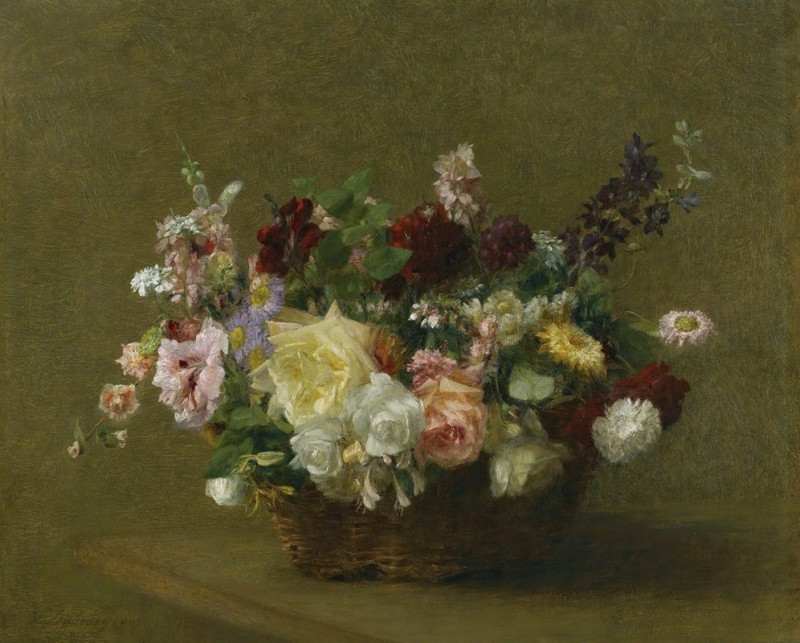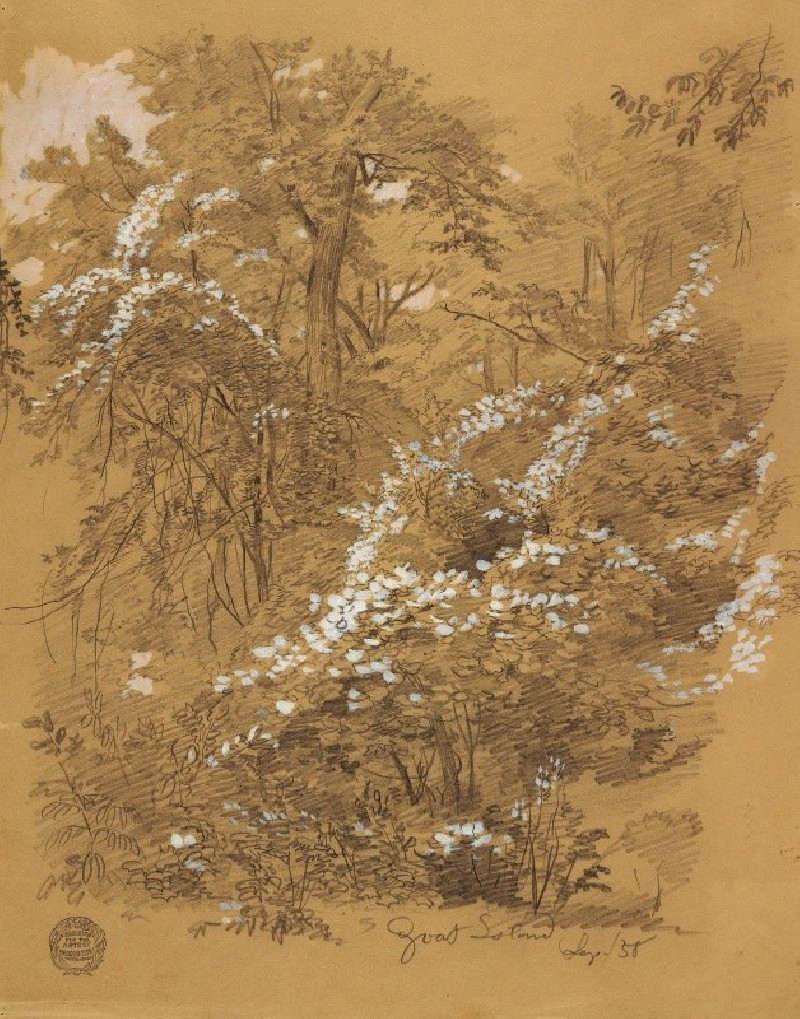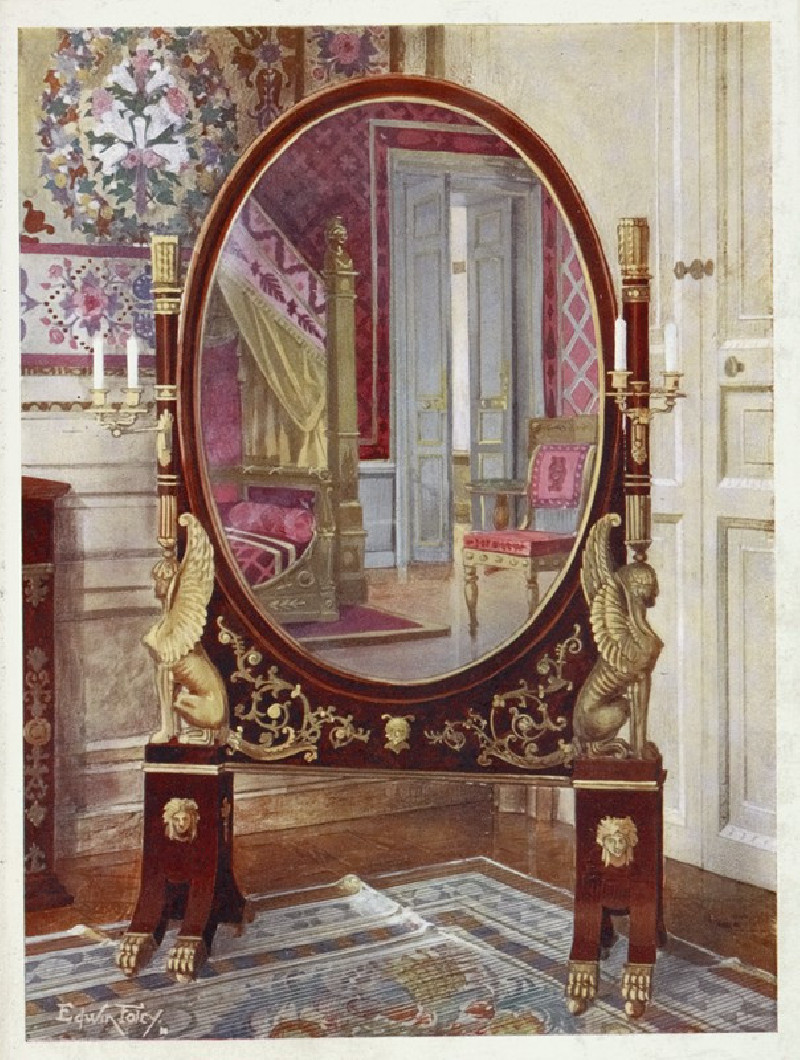männlicher Akt V
Technique: Giclée quality print
Recommended by our customers
More about this artwork
Artist:Karl Wiener's remarkable work, "Männlicher Akt V," offers an intriguing exploration into the human form, presenting a male figure rendered in a strongly expressive style. The painting, centered around a dynamic pose, shows a male nude holding a staff, emphasizing both strength and movement. Wiener's masterful use of chiaroscuro techniques to sculpt the muscles and contours of the body add a dramatic, almost sculptural quality to the drawing.The background is modestly detailed, allowing the viewer's focus to remain intensely on the muscular definition and the striking pose of the figure. The faceless head adds an abstract dimension to the piece, evoking a sense of universality and timelessness. Wiener's careful balance between detail and abstraction invites viewers to fill in the blanks with their imagination, making the artwork a personal experience for each observer."Männlicher Akt V" stands as a powerful statement in Karl Wiener’s artistic journey, encapsulating his ability to capture human emotion and physicality with a bold, confident stroke.

